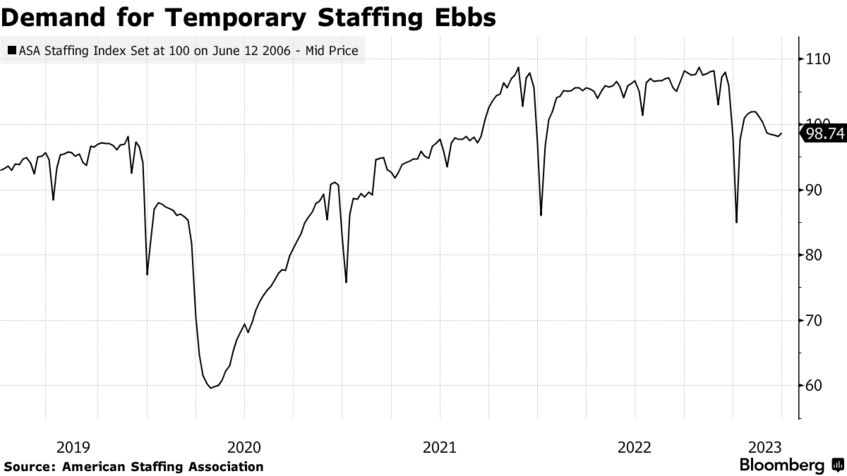A leading indicator of the US job market is a flashing slowdown ahead.
Demand for temporary and contract workers has ebbed in seven of the last eight weeks and is down markedly from a year ago, according to an index compiled by the American Staffing Association.
“There is definitely a cooling down,” ASA President Richard Wahlquist said in an interview.
The labor market, though, is still tight, Wahlquist said, with his members reporting more orders for help than they can fill in many sectors. Staffing, as measured by the association’s index, remains above the levels that prevailed at this time of year before the pandemic.
Federal Reserve policymakers keep close tabs on what’s going on with temp jobs because they’ve historically been a precursor of where the overall labor market is headed. Temporary staff is the first to be added when demand is picking up and the easiest to cut when growth is slackening.
The central bank is trying to take the edge off a spirited jobs market without sending it into a tailspin as it attempts to reduce inflation that’s running more than twice its 2% goal.
Some policymakers had been encouraged late last year by a string of declines in temporary employment in the monthly payrolls reports, seeing that as a sign that they were having success in tempering the labor market. But those declines have reversed this year, with temporary-help payrolls picking up in January and February.
Fed officials will get a fresh reading on the state of the jobs market on Friday, with the release of the Labor Department’s monthly employment report. Payroll growth is projected to have slowed to 235,000 last month from 311,000 in February, with joblessness holding steady at 3.6%, according to the median forecasts of economists surveyed by Bloomberg.
The decline in the ASA index isn’t the only sign of a cooling jobs market. Vacancies at US employers fell under 10 million for the first time since 2021 in February. Companies added fewer jobs in March than a month before, according to figures from ADP Research Institute. And Labor Department revisions to adjust for seasonal factors showed applications for unemployment benefits were higher than previously thought this year.
Wahlquist said employers are getting pickier in taking on workers after the “extraordinary” burst of hiring coming out of the pandemic in 2021 and into 2022. But they’re also focused on retaining the employees they have — mindful of how hard it was to staff up as Covid-19 lockdowns ended and the economy recovered, he said.
The association represents 1,700 staffing and recruiting agencies in an industry with annual sales in excess of $150 billion.


